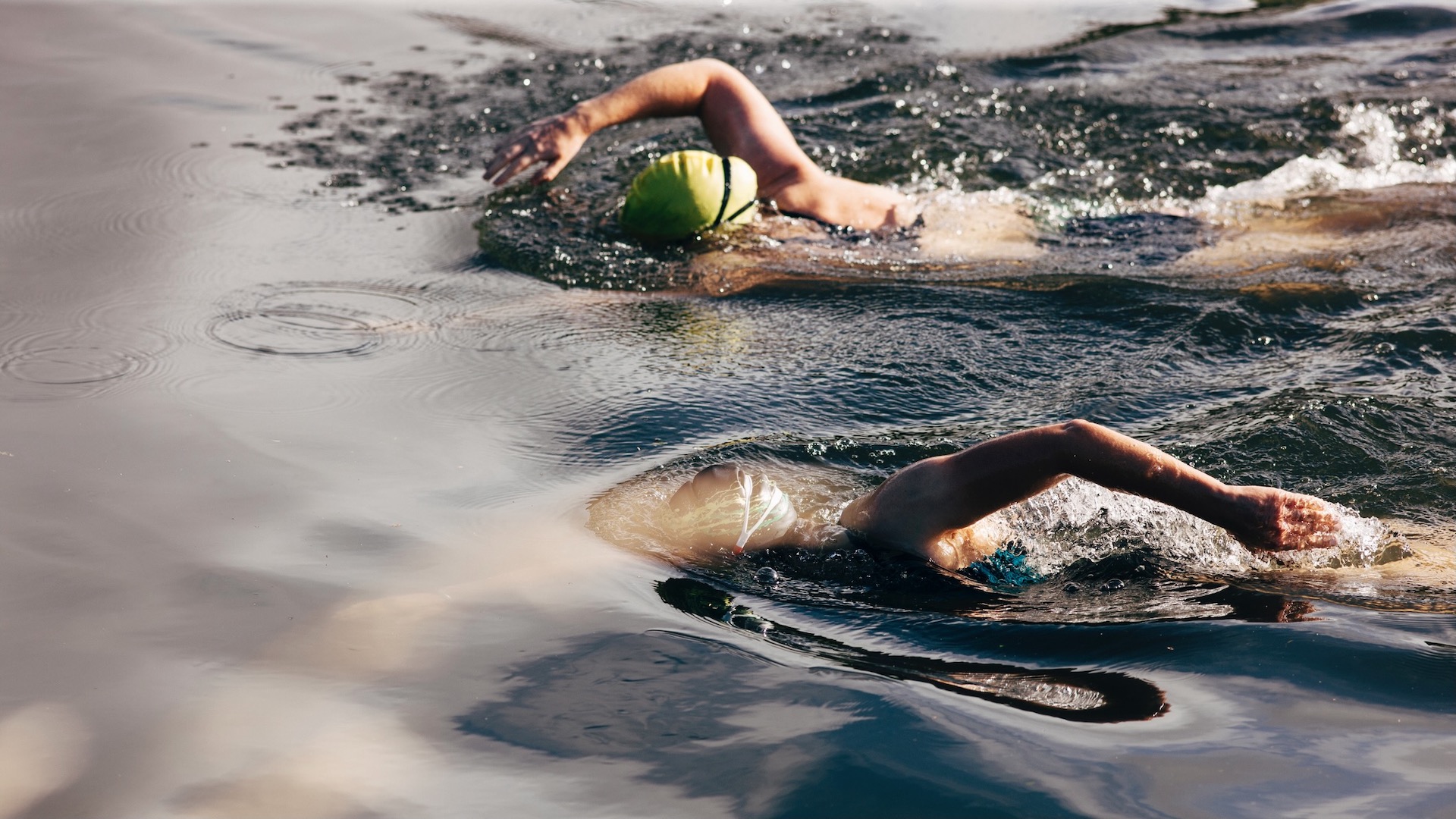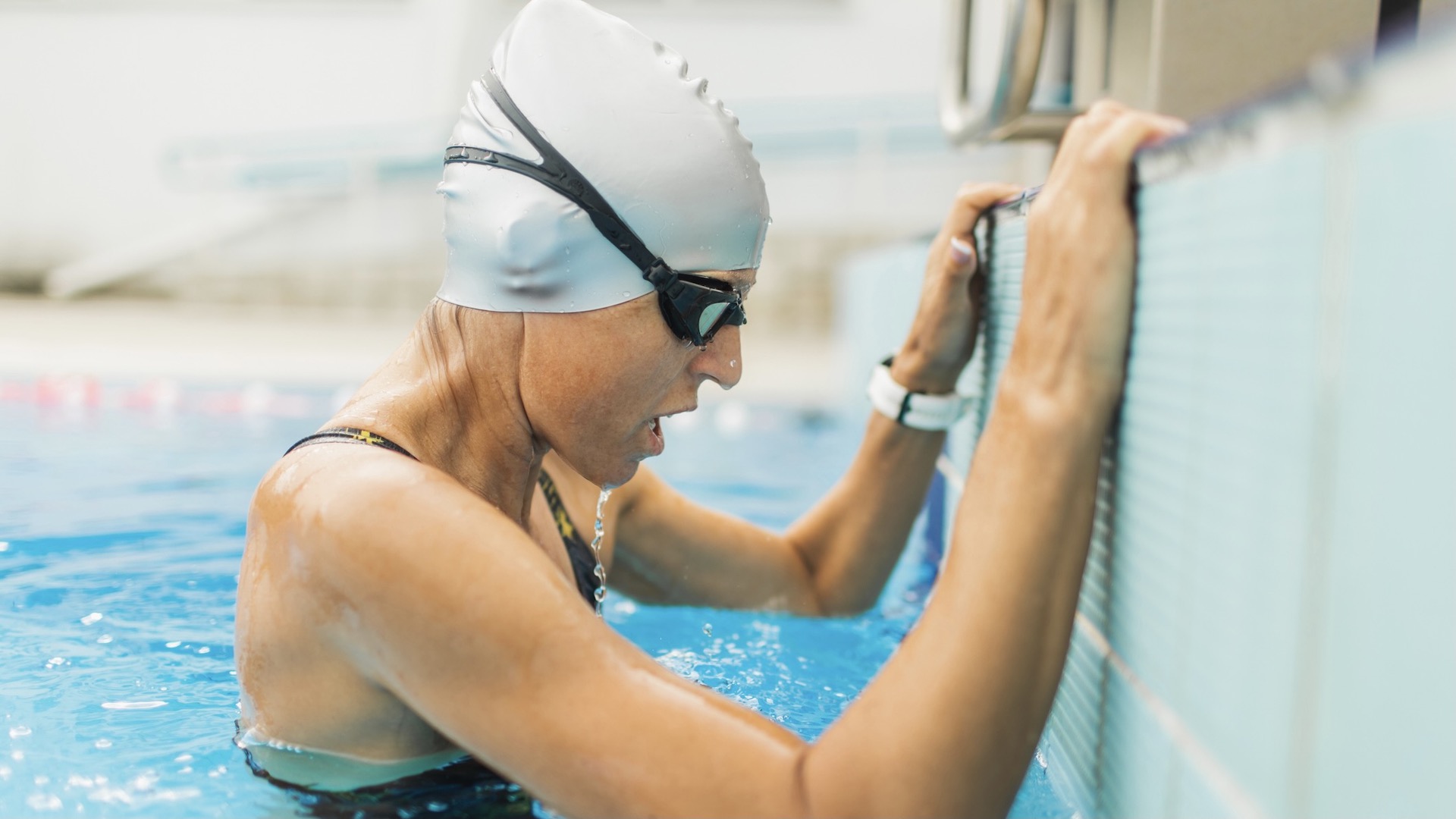Swimming for runners – are there any benefits?
We take a look at the evidence for including swimming training in your running schedule

While running more – and different types of run training drills – will undoubtedly help to improve your overall performance, there is also claimed to be a number of benefits of cross-training. One popular cross-training activity is swimming.
Cross-training for runners has long been said to be helpful for boosting pace, endurance, flexibility and strength, as well as helping to reduce the potential for injuries. So, is swimming as part of a running programme, beneficial?
Why choose swimming if you're a runner?
Swimming works – and strengthens – a range of different muscles, from arms and shoulders, through core muscles to the hips, legs, ankles and feet. It's also a low-impact activity because the water provides buoyancy for the body.
In contrast, running is more of a high-impact sport and this means it can be hard on joints. Running also utilises fewer upper body muscles when compared to swimming.
If you are looking for an activity to include as part of an all-round running fitness programme, swimming is often said to be a good cross-training sport.

Benefits of swimming training for runners
Let's look more closely at the claimed benefits of swimming for runners. In general terms, swimming has many health benefits including cardiovascular fitness. A study by Lazar et al revealed a range of aerobic, strength and balance benefits of swimming.
An article in Swimming World Magazine also looked a the different muscles – many of them! – engaged in different swimming strokes.
Advnture Newsletter
All the latest inspiration, tips and guides to help you plan your next Advnture!
While running is also a great form of exercise, offering cardio and strength benefits, doing the same activity day after day can become monotonous. Mixing in other sports usually helps to maintain your interest for you main sport.
Swimming is favoured by many runners because takes place in a different environment – whether an indoor pool or outdoors. You might have noticed that there is a huge growth in swimming in lakes, lochs, rivers and the sea and there is little doubt that part of the attraction is spending time surrounded by a nature.
Because swimming is a low-impact activity, it is also considered to be a good form of exercise for running recovery days.
Cross-training can help to rescue the risk of injury. This is because many injuries come from the repetitive nature of running, or doing the same action over and over again, as well as due to doing too much of one activity. If you are keen t cross-train, such as including swimming training for runners, it naturally reduces the sheer quantity of running training and, therefore, can help to avoid injuries.
If runners are injured, studies show that deep-water running has the potential to maintain V̇o2max and running performance.
But does swimming training help runners?
When considering the answer to the question of whether swimming training is an aid to the performance of runners, we need to think about the desired outcome.
The three main reasons runners cross-train are endurance, speed and recovery. Swimming, if done as part of a training programme developed by a sports coach expert, can accomplish all three.
For example, swimming is a cardiovascular exercise and when performed fast as sprints it will improve cardio fitness, similar to running. So swimming fast reps can help to build speed for running.
Likewise, when swimming at a slower pace for a longer period, you'll build endurance, which can help with longer-distance running. A study Aquatic Cross Training for Athletes, found that there are fitness benefits of deep-water running for non-injured runner – and specifically for endurance athletes.
There is also growing evidence of the advantages of cold water swimming for athletes, including runners. It’s claimed that cold water therapy – such as going for a dip in a lake or the sea – can help to boost recovery. It has been found that recovery happens because the cold water causes vasoconstriction of blood vessels, reducing inflammatory processes in peripheral muscles, for example, the leg muscles, after exercise.
Swimming can also be an aid for improved breathing technique for runners. Studies show that swimming has beneficial effects on the respiratory system and may reduce susceptibility to fatigue.
Another piece of research haas examined the difference between swimmers and middle-distance runners and found the swimmers had stronger lungs.
Swim training for runners
Swimming training is both a complementary activity for running and a great recovery activity. Here are some of the ways you can incorporate swimming into your running training programme.
Recovery swimming: Aim for a short session in between harder run training sessions. Simply get into the pool (or outdoor water) and do a 20 to 30-minute easy session of your favourite swim style. You could mix it up doing two length so freestyle and then two lengths of breast-stroke, for a more overall recovery session. Try not to get out of breath.
Interval training: Swimming is an all-round muscle workout and the means it’s a good additional or “instead of” training session for runners. Swimming at higher intensity for shorter intervals is similar to doing running intervals.
Begin with a 10-minute warm up and then swim faster efforts for a length or two lengths, with an easy length or two in between. You could build up the interval lengths and the number of times you repeat the intervals as you get fitter.
Endurance swim: Like a steady run at a comfortable pace, you can do the same with swimming. This will improve your aerobic fitness, stamina and endurance. Simply aim to swim for a set number of lengths without stopping. For example, start with 20 lengths of a 25m pool and then build up until you can swim 40, 60, 80 lengths. Or you could choose to swim for a set time, for example, 30 minutes non-stop. You will need to pace your swimming to allow you to keep going.
Swim running: This is a good activity if you are injured and can’t run on hard ground. You’ll need equipment that allow you to stay upright in the pool and then. You simply walk or run lengths. You can do the same sort of sessions as you might on land, such as easy pace for 10 mins, then pick up the pace for 15 to 20 minutes, followed by a cool down of 10 minutes at an easier pace.
Overall, the evidence of sports research does point to there being many benefits of swimming for runners and if including in a running programme, swimming is a good choice for cross-training.

Fiona Russell is a widely published adventure journalist and blogger, better known as Fiona Outdoors. She is based in Scotland and is an all-round outdoors enthusiast with favorite activities including trail running, mountain walking, mountain biking, road cycling, triathlon and skiing (both downhill and backcountry). Aside from her own adventures, Fiona's biggest aim is to inspire others to enjoy getting outside and exploring, especially through her writing. She is also rarely seen without a running skort! Find out more at Fiona Outdoors.
